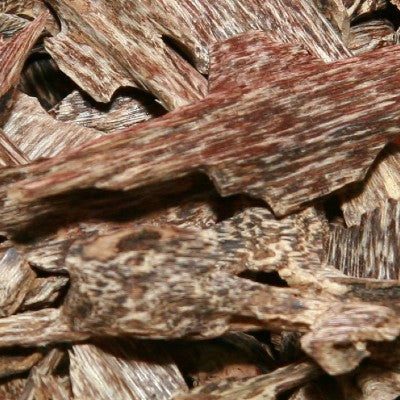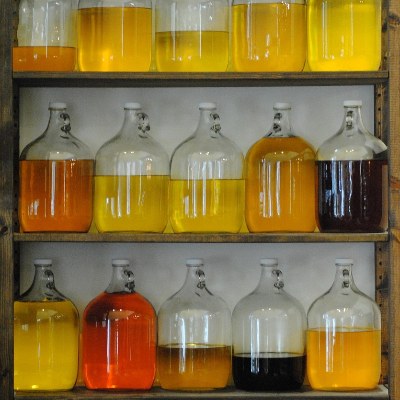Menu
-
-
F.A.Q
- How to identify genuine agarwood chip, natural or cultivated
- How to identify oil injection / absorption fake agarwood beads
- How to know if there are more than one oil in your oil
- How to make your wood bracelet or mala darker
- How to tell if an Agarwood bead sinks WITHOUT sinking it under water?
- How does back flow incense work and how do you burn it?
- Where to start if you don't know what agarwood is ?
- Why are you losing money if you buy seeds and plants?
- Which agarwood incense should I choose?
- Frequently Asked Questions
- Agarwood Related Articles
- Shipping
-
SHOP - Agarwood
-
SHOP - Other Fragrant Wood
-
SHOP - Incense Holder and Burner
-
- FREE Oud Oil guide
- Testimonials
- "Why did you buy this?"
- Contact us
- About Us
- +61430284329
- Login
-
English


Different grades of Agarwood (and Ky Nam) and their purposes
July 01, 2022 11 min read
Table of Contents:[hide]
Whether you're new to incense burning or have been doing it for a long time, there are several reasons why people enjoy burning it.
Some reasons people love to burn incense
-The aromatic scents can boost moods and create an uplifting atmosphere.
-It can be used for relaxation or as part of meditative practice.
-Burning incense is a tradition in many cultures and religions.
-Some people enjoy the sensual experience of the smoke wafting through the air.
-The ritual of lighting and extinguishing incense can be calming and centering.
-Incense smoke can purify a space or object.
-It can be used to create an intention for your day or manifest your desires.
There are different ingredients to make incense.
- Herbs: Lavender, sage, rosemary, thyme
- Resins: Frankincense, myrrh, copal
- Essential Oils: Cinnamon, orange, eucalyptus
- Woods: Sandalwood, cedar, pine
- Barks: Cinnamon, cacao
- Flowers: Rose, jasmine, lotus
- Woods: Sandalwood, cedar
One of the ingredients to make fine incense is Agarwood. Also known as aloeswood, it is a highly valued wood that has been used for centuries in religious and spiritual ceremonies.
The fragrant wood is burned as incense or used as a powder and is also used in aromatherapy and natural medicine. There are many different ways to use Agarwood in our daily life: from burning it as incense, wearing it as a perfume, or using it in skincare products. Agarwood has a wide range of benefits, both spiritual and physical, that make it a valuable addition to any self-care routine.
In the wild, the Aquilaria trees with Agarwood are scarce and can only be found in certain parts of the world, especially southeast Asia, making it one of the most expensive woods in the world. Thanks to horticultural technology, we can cultivate Agarwood, making it affordable or sustainable to use.
Agarwood has a deep, rich, and unique scent that promotes relaxation and focus. It's often used in meditation and prayer, as the smell is believed to purify the mind and body and connect one with the divine. The wood is also used in Traditional Chinese Medicine for its healing properties.
When you burn Agarwood incense, the smoke is said to cleanse and purify your space and bring positive energy. The scent is grounding and calming, making it a great way to relax after a long day or create a peaceful meditation environment.
You can use Agarwood incense to pray in your daily ritual. You can also use it to smudge your place or enjoy its aroma.
But do you know there are different grades in Agarwood for various purposes?
Have you noticed that in the local marketplace online and offline, there are thousands of listings of Agarwood incense, ranging from $4 to $1500+ a pack of similar weight? On all of these packages, the manufacturers claim that they use real Agarwood. You may ask yourself if they lie? And why there is a big gap in the price?
Let's dive deeper.
Agarwood chips
This is the infected wood of the Aquilaria tree. As a general rule, the more resin the Aquilaria tree has, the higher the cost is.
Like many trees, there are three main parts of an Aquilaria tree: roots, trunk, and crown. The roots anchor the tree in the ground and absorb water and nutrients from the soil. The trunk is the tree's main support and helps transport water and nutrients up to the leaves. The crown includes branches and leaves, the main organs for photosynthesis. The roots of a tree are usually the first part to emerge from the ground when a seed germinates. The roots grow down into the soil, anchoring the tree in place and absorbing water and nutrients. The trunk is the tree's main support and helps transport water and nutrients.
Agarwood can be formed in any part of the tree except the leaves: Agarwood could be in the branches, in the trunk, and in the root of Aquilaria trees.
About grading, there is no standard official grading. Some people use: Sinking , A, B, and C to grade Agarwood.
Sinking
It means the wood sinks under water. Aquilaria tree has a density less than 1 so most likely, the wood will float
However, as Agarwood forms, resin content develops more than wood content to a point that its density is larger than 1. And this is when the wood sinks.
When the wood sinks, people believe that there are a lot of resin content in the wood.
There are not many sinking grade left in the market.


Source: provided by Agarwood hunter
Grade A,B and C
Generally, A means excellent, B is standard, and C is budget low-cost immature wood.
Example


Source: Liu YY et al., 2017


Grade B Agarwood, thin and soft. Good for making incense and chips
Source: Grandawood

Grade B Agarwood: hard wood. Good to make Agarwood beads
Source: Grandawood
Agarwood C Grade
There are many type of Grade C Agarwood. The one in the video is hard. Good for making small figurines.
The above images are general guidelines only.
Some times, the higher grade may not be what you are looking for. I have tried C Grade Agarwood which was more aromatic than the A grade. The seller insisted the A smelled better.
I did not argue because I believed scent is quite personal. What I like does not mean what you like.
On the other hand, appearance can be misleading. When you have not built trust with your seller, you need to physically hold the chips and burn them to try. Without burning and experiencing the aroma, it is difficult to determine if the products suit one's purpose. Some Agarwood appears to have an A grade, but it smells like C. Even worst, it does not smell like Agarwood at all because it is NOT Agarwood. It just looks like one.
Agarwood powder
To distil Agarwood oil or to make incense; first, we need to pulverize Agarwood into wood powder. (in case you want what it smells like, click here)
If a manufacturer uses this powder to make incense, there will be no by-product. 100% material will be used.
If the same type of Agarwood powder (distilland) is used to distil Agarwood oil (distillate), then most of the resin content from the powder will turn into oil.
Once this distillation process is completed, the distilled distilland -Agarwood powder- has a bit of resin left. This powder is called Spent-Wood or Post-distilled wood.
Spent wood has dark brown colour, and there are some remaining aromatic molecules after oil distillation.
How can this Spent Wood be used?
This powder does somewhat have a hint of Agarwood smell because it is Agarwood (although without much resin left). Instead of wasting this powder away, people still can use it to make the lower grade Agarwood products.
Due to the cost advantage, people use it to make praying incense or Bakhoor
That is why you see some Agarwood incense which has a retail price of $10 for 50g. There is nothing wrong with it, it means the Agarwood used in this incense is spent wood.
Some manufacturers will use this material to re-distil again to make Grade C Agarwood Oil.
Or They make lower-grade incense such as praying incense or in some bakhoor. It does smell woody, just not as good as the original Agarwood powder. Many incenses on the market, labelling as Agarwood incense, are made from this spent-wood powder. If you tried these incenses, you might not feel quite satisfied.
Ky Nam (also known as Kyara)

In 1969, Poet Quach Tan (1910 - 1992) wrote the book "Xứ Trầm Hương" (Agarwood region). In Vietnam, many people used this book as a reference for Agarwood and Ky Nam.
Quach Tan spent several years living and working in Nha Trang (a renowned Agarwood region in Vietnam). He said that both Agarwood and Ky Nam are from the Aquiaria trees based on the experienced hunter. In the Aquilaria tree, Ky Nam and Agarwood could co-exist. If the Aquialria tree has Agarwood, Ky Nam may not exist. However, if there were Ky Nam in the Aquilaria tree, you would usually find Agarwood next to or surrounding it (Ky Nam). Ky Nam is a subset of Agarwood, and it is really rare.
What are the differences between Ky Nam and Agarwood?
There is no formal scientific research on these two. The below is based on personal experiences, interviews of experienced users, and reading from folk medicine and should be used for your information only.
The differences lie in physical properties and flavours.
Ky Nam: At maximum resin/oil coverage, Ky Nam has a variety of tastes including sour, spicy, bitter, and sweet. When combusted, it gives off a unique scent and green smoke that travels straight into the air.
Agarwood: The resin/oil coverage of Agarwood is lower than Ky Nam. The bitterness is quite strong and it is the main taste. Only by burning does this aromatic woody become apparent, and it produces white smoke that travels non-directionally before dissipating into the air.
- Agarwood is more solid and heavier than Ky Nam, yellowish - brownish colour. It is bitter.
- Ky Nam is lighter and softer than Agarwood. It is dark-brownish to black. The flavours are spicy, sour, sweet and bitter.
- Agarwood smells woody, Ky Nam smells not only woody but also milky creamy. The smoke of Agarwood rises up, spreads and dissipates. The smoke of Ky Nam rises up in a straight line and its aroma stays in the air longer.
Although both Ky Nam and Agarwood can be general health being, their medicinal properties are also different:
- Agarwood is to bring "Qi" down 下气 (Used in folk or Traditional Chinese medicines to relieve asthma symptoms, shortness of breath, hiccups, sputum)
- Ky Nam is used to treat 凤滩证 Wind phlegm pattern (Characterized by vomiting of foamy phlegm, chest tightness, dizziness, headache, eye distension/ pain, the sound of phlegm in the throat, and deviation of the eyes and mouth border. The tongue coating is white and greasy. The pulse is wiry and slippery. Often occurs when the external wind that carries turbid phlegm attacks the body or liver wind that carries turbid phlegm affects the body- WHO International Standard Terminologies on Traditional Chinese Medicine page 129)
- In TCM/ Folk medicine, Ky Nam can be grated into powder and drank with water, or burned as incense. Or simply, put a tiny bit of Ky in one mouth and chew. Sometimes, people just wear Ky Nam as a pendant because they believe that Ky Nam has healing power (just like Crystal healing)
There are four types of Ky Nam. Their Values are clearly delineated in an old saying "Nhất Bạch, Nhì Thanh, Tam Huỳnh, Tứ Hắc", meaning
- First White
- Second Green
- Third Yellow
- Fourth Black
- White Ky Nam: white in colour, soft and usually contains a lot of oil

- Green Ky Nam: despite the name, it is not really green. Maybe in the right angle with the right light, we may see a bit of greenish colour. It could be soft when the oil content is high or hard when the oil content is low

- Yellow Ky Nam: yellow like be wax. It is hard and heavier than the White and Green

- Black Ky Nam: black and hard. Some parts which have high oil content are as soft as White Ky Nam.

It could take centuries for Aquilaria trees to develop Ky Nam, so Ky Nam is rare. Due to its complexed exquisite scent, many people want to try it. Demand is larger than supply making Ky Nam prohibitively expensive at approximately $3 million AUD a kg.
There are not many people in the world who would buy a fragrant wood at $3 million a kg just to burn. More than likely, they will collect it, look at it, and put it back in the locker. Many people heard that Ky Nam is aromatic and at this price, not many people can experience it. Even the owner of this piece of wood, may not be able to smell it himself.
The description of Ky Nam fragrance most likely was written in the past because back then, the price was this high. Back then in the '90s, it was less than $10 k per kg.
Many people want to try it, but not many people can afford it. So what should we do?
And that is when science comes in.
Cloned Ky Nam - a breakthrough of horticulturist
Legends said there was a hunter who was hunting through the jungle when he came across a big tall tree. With his experiences, he knew this was an Aquilaria tree. Upon closer inspection, he noticed that the tree had Agarwood. As a hunter, he always carried a lighter with him because he might spend days in the jungle. Carefully he lit the wood. The unique aroma could not be mistaken. It was Ky Nam. This tree had Ky Nam. He was amazed by his discovery and knew that he had found something special.
With conscience, he did not kill the tree but marked its location before returning home. Next, he brought a horticulturist to go back to the site and do the unthinkable: clone the Aquilaria tree.
It was a success. The Aquilaria tree that had Ky Nam had been cloned through grafting.
Although cloned Ky Nam does not smell as complex as the Wild Ky Nam, I personally found that there was a creamy milky note in it that was very similar to the Wild one.
The good news is you can try this incredible creamy woody scent for $100 AUD.
What an experience of a lifetime, click here
Wild Agarwood
There is no official definition of Wild Agarwood.
In the past, when horticulture had not yet been developed, Wild Agarwood meant Agarwood from the wild: jungles, mountains, hills, etc., where there was no human intervention.
Here are some interesting thoughts:
- Question: What do you call Agarwood harvested from planted Aquilaria trees on a plantation?
Answer: Cultivated Agarwood
- Question: What do you call Agarwood harvested from wild Aquilaria trees in the jungle/forest?
Answer: Wild Agarwood
- Question: What do you call Agarwood harvested from a planted Aquilaria tree without human intervention? These trees were planted on a plantation, but there was no inoculation, no fungi (Agarwood creation technique)
Answer: some people call it Wild Agarwood; some call it semi Wild Agarwood. Some call it cultivated Agarwood.
- Question: Some hunters hunt Agarwood and do not have land to plant them. So they "plant" the Aquilaria trees in the forest and revisit them years later. What if there was Agarwood in these trees. What should this Agarwood be classified?
Answer: Maybe Wild Agarwood. However, a human planted this Aquilaria tree. Why can we not call this cultivated Agarwood?
People think Wild Agarwood is more expensive than cultivated Agarwood. Is this true?
The Aquilaria tree is the Aquilaria tree. Whether it lives in the jungle or in the plantation, it is still the Aquilaria tree.
All we care about is the Agarwood inside the tree.

Agarwood takes time to develop and it gets better with age.
For economic reasons, most cultivated Agarwood is harvested in the second year of infection. Any cultivated collected before 2 years of infection are not quite mature. But for financial reasons, some growers sell immature Agarwood and grade them as B or C because these wood chips do not smell as good as the mature ones when burnt.
This theory is also applied to the wild Agarwood.
The Agarwood harvested from the wild jungle Aquilaria tree
- is sublime if the age of infection is several decades old,
- is not better than cultivated Agarwood, or it could be even worse if the age of infection is several months old. Reason: Agarwood is being developed, it is not yet ready for humans to enjoy.
- Smells different from the one cultivated because the jungle's soil is different. The condition in the wilderness is not the same for plantations. Please not smells different does not mean it will smell better. Better or worse depends on who is smelling. Each person perceives smell differently.
To sum up
Ky Nam's Aquilaria tree was an exceptional find, and cloning it was a fantastic feat. The resulting clone does not have the same complex smell as the original, but it is still a creamy woody scent.
Wild Agarwood is an exceptional and often expensive product. It is important to remember that not all wild Agarwood is formed equal, and some may even be inferior to cultivated Agarwood. It is about the age of infection. The longer the infection is, the more Agarwood will be formed; over time, it becomes more aromatic. The experience of smelling a truly sublime piece of wild Agarwood is unforgettable. Try one today.
Leave a comment
Comments will be approved before showing up.
Also in News

What is Tasbih? The Deep Meaning of Subhan Allah and the Role of Prayer Beads
November 09, 2025 4 min read


